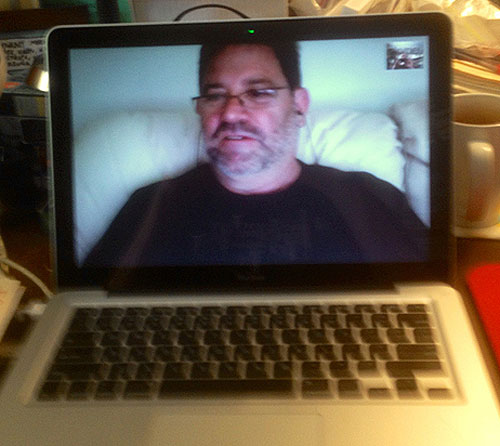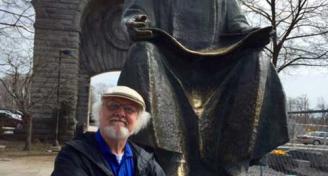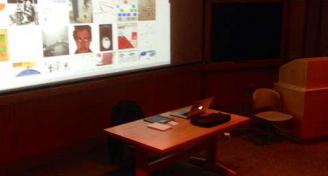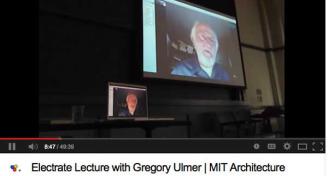
FRE/AR
Skype conference with Craig Freeman, discussing our collaboration on an essay documenting konsult experimentation with augmented and mixed reality. Freeman participates in collaborations with several colleagues, including with ManifestAR, Will Pappenheimer (among others). The first topic of discussion was the essay for the collection edited by Vladimir Geroimenko, Augmented Reality Art: From an Emerging Technology to a Novel Creative Medium, (Springer publishers), with entries by Todd Margolis, Naoko Tosa, Sander Veenhof, Will Pappenheimer, Rod Berry, Andrew Burrell, Mark Skwarek, Partrick Lichty, Nathan Shafer, Ian Gwilt, Tamiko Thiel, Geoffrey Alan Rhodes, Margaret Dolinsky, Damon Loren Baker, Lily & Honglei, Isabel Pedersen, as well as the editor (is that everybody?). The Freeman & Ulmer chapter includes examples of seven different AR projects, intercut with a theoretical outline of five fundamental figures guiding the design experiment as probes for a heuretics of electracy. The tentative names for the figures are: Apparatus, Design, Event, Object, Capabilities.
The second topic addressed was the final design for an eMorial installation (forthcoming), part of a konsult on gun violence. The design explores the conductive reach of the "backpack" -- its capacity to gather into an image category for further thought several acts of "terrorism" in its official (group) and unofficial (private) manifestations (Columbine, Virginia Tech, Spanish train bombing, Sandy Hook Elementary School, Boston Bombers, Beslan School massacre by Chechen rebels), attached as peripheral (MEmorial genre) to the Minute Man monument (alluding to the Second Amendment reference justifying gun ownership rights as assoicated with a standing militia). An initial image (iconic scene) derived from news reports of cell phones ringing in the backpacks of victims, calls from relatives and friends checking to see if their loved ones were safe. The backpack is modalized, evoking different associations in different possible worlds: from the omnipresent satchel of elementary school children to a roadside bomb disguise. One purpose of MEmorials (eMorial) is to render apparent the public collective status of disasters otherwise treated as individual contingencies. For example, gun violence is not recognized in the United States as "terrorism," despite the fact that since 1960, there have been 1.8 MILLION gun deaths in the US (murder, suicide, and accidents) (statistics cited from essay in the New York Review of Books).

[fancy_link path="http://johncraigfreeman.wordpress.com/" type=" default" | color="red" | class="additional classes"]John Craig Freeman blog[/fancy_link]





